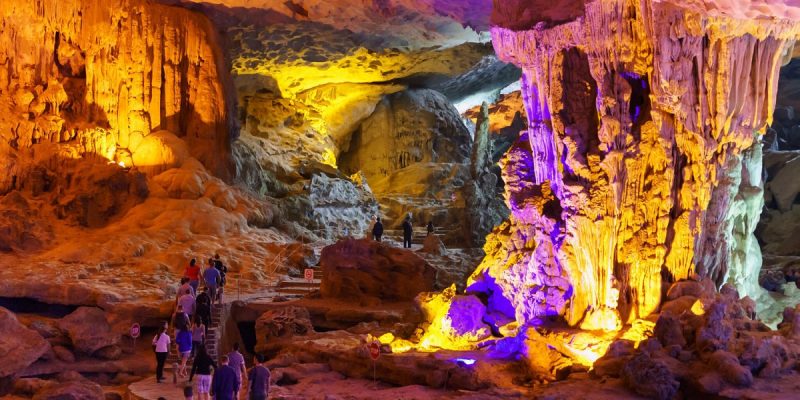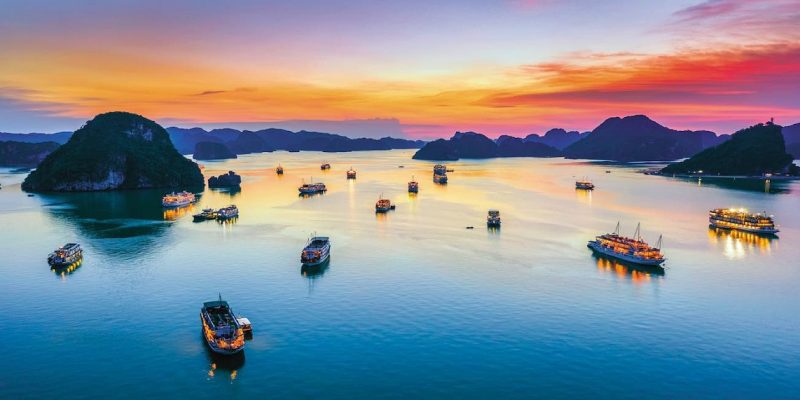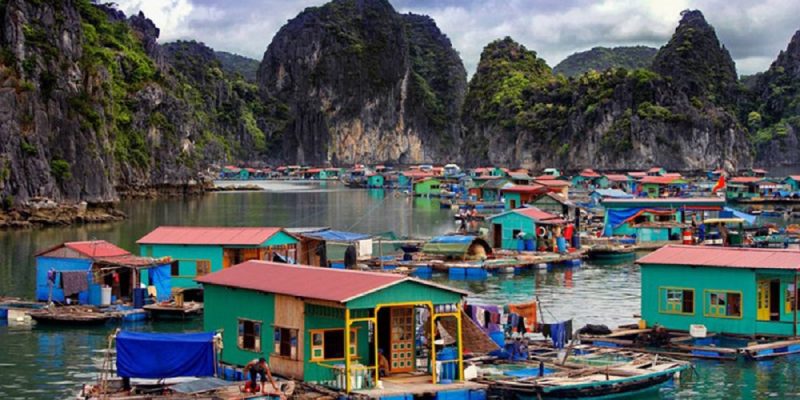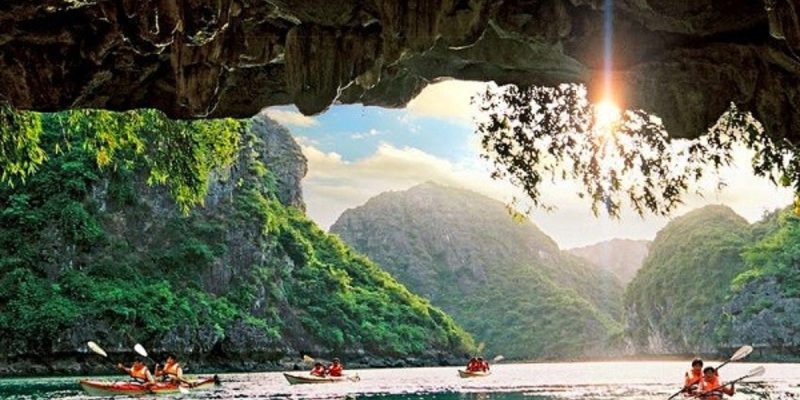- Ha Long Bay is located in the northeast corner of Viet Nam, 165 km from Ha Noi. In the Province of Quang Ninh. Ha Long Bay covers an area of 1,553 km2 with 1,969 islands, of which 90% are limestone islands. To the west and north west, Ha Long Bay stretches from Yen Hung district in Ha Long city to Cam Pha town in Van Don district; to the south-east and in the south, Ha Long Bay borders the western shore of Tonkin Gulf; to the southwest the Bay borders Cat Ba island (Hai Phong province).
In 1962, Ha Long Bay was recognized as a vestige and beauty spot of national significances by Ministry of Culture and Information of Viet Nam and was also recognized as a world natural heritage site twice by UNESCO organization. The first time, in 1994 for the exceptional and universal value of the landscape and the second time in 2000 for the special value of geology and geomorphology.Ha Long Bay is a UNESCO World Heritage Site and is a natural wonder – Halong Bay is made up of more than 3,000 limestone karst cliffs. On the bay island there are hundreds of beautiful caves, including many famous names such as Thien Cung, Bear Head, Sung Sot, Tam Cung and Bo Nau. Some archaeological sites hold archaeological evidence of the prehistoric cultures of Soi Nhu and Ha Long such as Soi Nhu, Cung Cung, Tien Ong, Thien Long, Hang Trong, and Virgin.
If you are planning a trip to Ha Long Bay, Here are interesting facts about Ha Long Bay
1. Ha Long Bay is made up of over 1,000 islandsOver 1,900 limestone island and islets make up Ha Long Bay. Most of them are named based on their shape and appearance. For example, Voi Island looks like an elephant and Ga Choi looks like a fighting cock. There are so many islands that less than half have a name.Some of the formations date back over 500 million years and most are much higher than they are wide. The smallest islets rise from the water to 100 metres (330 ft), which is taller than the Statue of Liberty.Some of the most famous grottos include the Heavely Residence on Thien Cung, Suprise Grotto on Sung Spot and Three Palace Grotto on Tam Cung.
2. You can visit floating villages in Ha Long Bay
Ha Long Bay is home to several small communities that live on floating villages tucked behind the mountains. Originally built for fishermen returning with their fresh catch, the floating villages quickly became residential and totally self-sufficient. While the government has forced some residents to move inland, many have stayed. There are now four remaining floating villages: Cua Van, Vung Vieng, Cong Dam and Ba Hong.

3. Ha Long Bay is a haven for wildlife
Ha Long might only reach depths of around 10 metres (33 ft), but it’s home to a staggering variety of marine life. Experts have recorded around 1,000 marine species in the area, including 450 different mollusks and at least 200 fish species, making for some pretty epic snorkelling.On dry land, visitors can get up close to monkeys, birds, lizards and antelopes too. Cat Ba’s national park is home to 32 species of mammal, including most of the world’s 65 remaining golden-headed langurs, the world’s most endangered primate.

4. Ha Long Bay is home to amazing caves

As the most popular cave in Halong Bay, Surprise Cave can be very crowded. If you do not mind the crowd, you’ll fall in love with this cave.It takes a little trek to reach the cave’s entrance but once you are in, you will be amazed by the natural structure of this cave and various stalactites and stalagmites.Surprise Cave consists of two major chambers. The first one, comparable to a theatre hall, features numerous stalactites hanging from the ceiling. From a narrow passageway, it leads to the massive second chamber, where a flow of natural light brightens the surfaces of a space roomy enough to hold thousands of people.Sung Sot Cave’s 10,000 square meters of space hold thousands of stalactites and stalagmites and are threaded by a 500-meter paved passageway.

5. There’s a fascinating legend behind Ha Long Bay
Halong Bay in the Feudal period played an important part in one of the most glorious pages in Vietnam history.
In the 12th century, a part of Halong was a busy commercial port which was one of the very first international commercial port of Vietnam. With topographic characteristics of mountains divided by the sea, calm water, the area became perfect for a harbor to exchange goods.
Hundreds of year ago, Halong was famous for its stunning seascapes and favorite places of the kings who reigned over the country in this time. In 1468, King Le Thanh Tong had a cruise here. Admiring the scenery, He composed a poem and had it carved in the stone mountain which today called Poem mount. Trinh Cuong Lord, in 1729 also visited the place and immediately impressed by the beauty that nature bestowed on Halong Bay.
History shows that Halong Bay was the setting for local naval battles against coastal invaders. The Western area of the bay was the battlefield where General Tran Khanh Du destroys Mongol ships.
In 930, King Ngo Quyen stopped Liu Hongcao ships from sailing up the nearby Bach Dang River by placing steel-tipped wooden stakes at high tide, sinking the enemy’s fleet. Wooden stakes cave – a famous tourist site today – used to be a secret place where these weapons were hidden. Bach Dang Victory marked an end for 1000 years of Chinese domination, opening up an independence age for the country.











